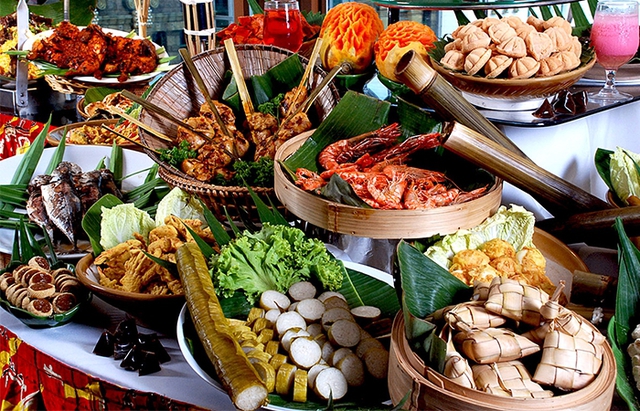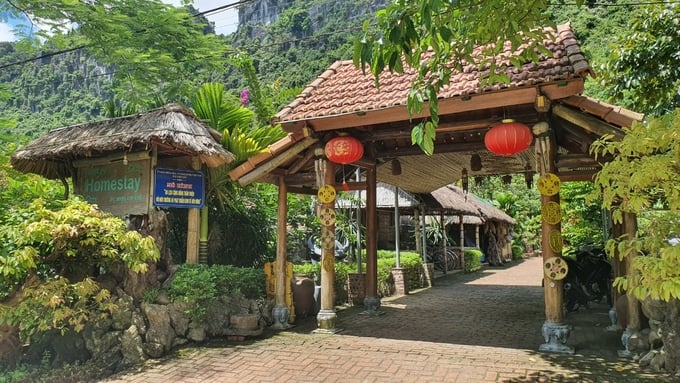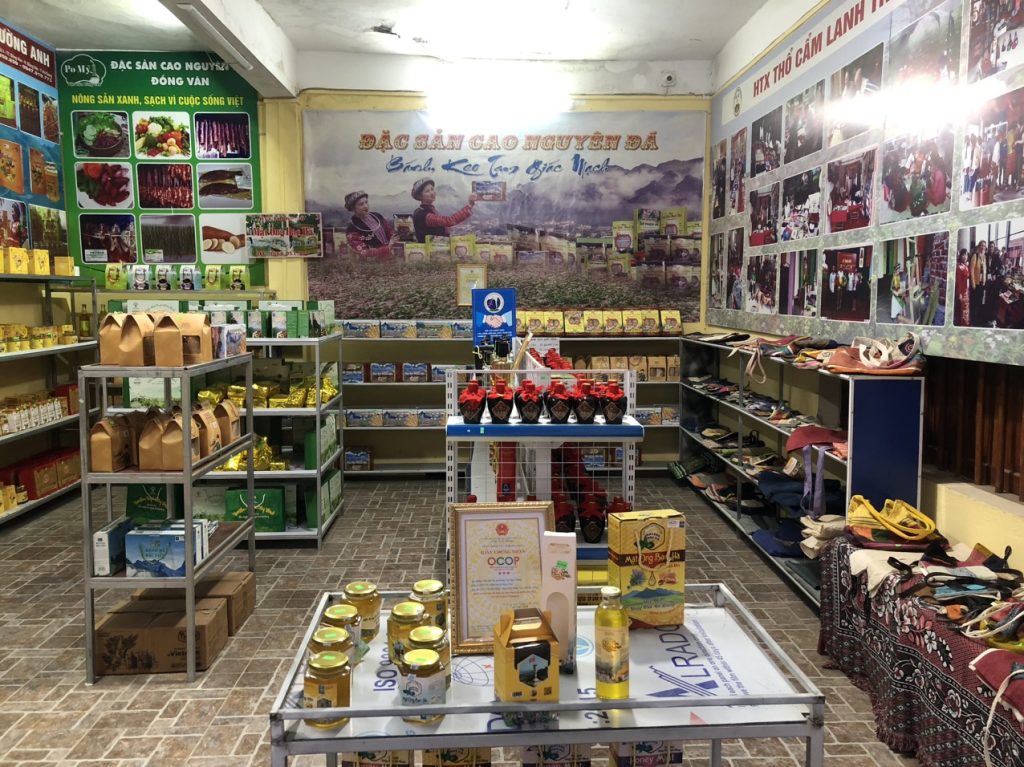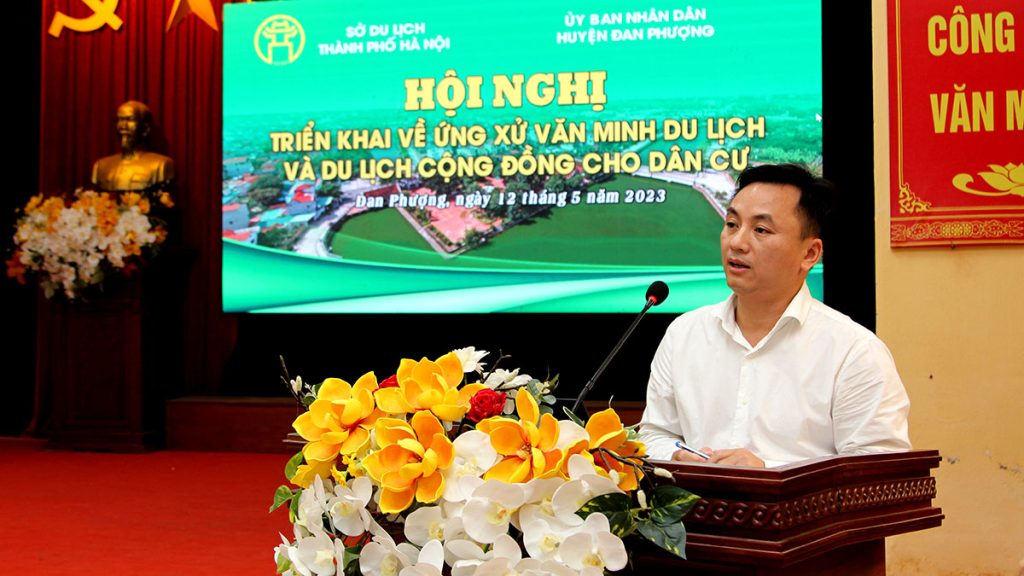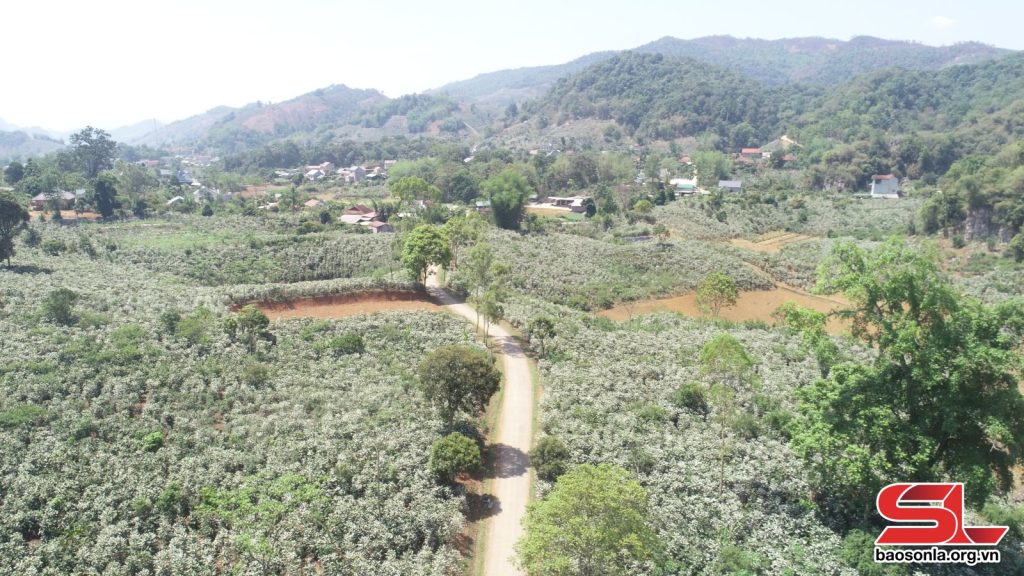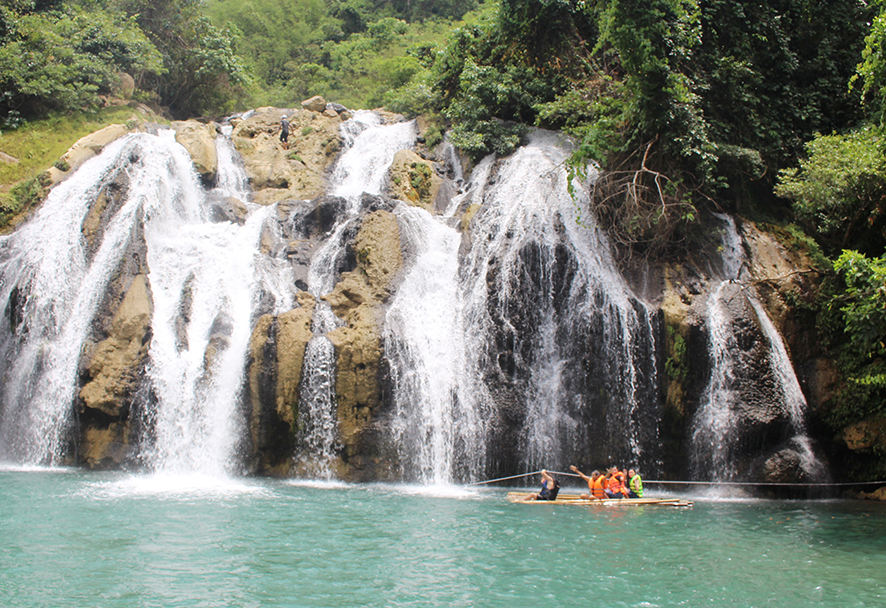
Tourists visit Ta Puong Waterfall. Photo: Tu Linh
In order to harness this potential, in recent times, many individuals from ethnic minority communities have undergone training in community-based tourism. As a result, they have not only found employment but also increased their income, contributing to the stability of their livelihoods.
Ho Van Gioi (born in 1990), residing in Trang Ta Puong Village, Huong Viet Commune, Huong Hoa District, is the Head of the Community Tourism Group in Trang Ta Puong. He shared that a year ago, he and three other Van Kieu ethnic minorities in the village were selected by the Netherlands-Vietnam Health Committee in Quang Tri to undergo training on community-based tourism. The aim was to develop tourism at Ta Puong 3 waterfall.
During the training, the four individuals were instructed in tour guiding, rescue operations, first aid, and the preparation of food meeting safety and hygiene standards. After completing the training, the group received the support of VND65 million ($2,673) to build a nearly 1km footpath from the parking area to the waterfall.
Based on this initiative, the Community Tourism Group in Trang Ta Puong was established, consisting of 18 members, with four individuals trained in tourism forming the core. They were assigned specific tasks within the group, such as food preparation, rescue operations at Ta Puong 3 waterfall, and guiding tourists exploring the waterfall.
At Ta Puong 3 waterfall, 15 bamboo huts were constructed to welcome visitors, each large enough for about 10 people to stop and experience the waterfall. Since then, Ta Puong 3 waterfall has become an indispensable destination for many adventurous tourists both within and outside the province, eager to explore nature.
According to Gioi, tourists interested in experiencing the local ethnic minority cuisine need to inform him in advance so that the group can prepare and serve more attentively. During the recent April 30 and September 2 holidays, Ta Puong 3 welcomed approximately 600-700 visitors in a single day. On normal days with good weather, this location also attracts dozens of visitors. This influx has provided the 18 members of the community tourism group with stable monthly incomes.
Leaders of Huong Hoa District stated that an increasing number of organizations and units are offering training courses for ethnic minorities in community-based tourism, contributing to employment and income growth for local residents. The district has directed relevant departments and the Vocational Education and Continuing Education Center to focus on training for ethnic minorities, particularly in tourism-related skills, to tap into the area’s existing potential.
Recently, Helvetas Vietnam, in collaboration with Ken Travel, conducted a training course for ethnic minorities on culinary tourism, tourism marketing, and community fire organization skills in Huong Phung commune and Tan Hop commune, Huong Hoa district. Through this training, 15 households members were equipped with the necessary knowledge and skills to organize and promote local tourism to serve tourists.
Huong Hoa and Dakrong districts have significant potential for tourism development, especially community-based tourism. Many sites have been effectively exploited to serve tourists, featuring traditional songs and dances, cultural festivals, traditional musical instruments, and the majestic, beautiful natural landscapes unique to the Van Kieu and Pa Ko people. These districts have identified the development of tourism, especially community-based tourism, as an important focus to create jobs and increase income for ethnic minorities, requiring sustained efforts for implementation.
However, to develop community-based tourism, the labor force of ethnic minorities needs vocational training in tourism. This training allows them to take an active role, guiding tourists and preparing specialty dishes, which is essential to attract more visitors to the region.
Dr. Tran Dinh Hang, Deputy Director of the National Institute of Culture and Arts Studies in Hue, who has conducted several studies on community-based tourism development in Western Quang Tri, emphasized that to promote the development of community-based tourism among ethnic minorities, localities need sustainable and long-term solutions. These solutions should ensure the rights and benefits of the local ethnic minority communities.
Particularly, the state should establish specific mechanisms and policies for the strategy and planning of community-based tourism, supporting the development of infrastructure. Practical measures are needed to train the local workforce on the spot, especially vocational training for ethnic minorities. This approach aims to develop community-based tourism while preserving and promoting the cultural identity of the region. Diversifying promotional activities and marketing strategies for tourism products is crucial to provide momentum for the development of community-based tourism.
Foundation laid to improve locals’ livelihood
In April 2022, the People’s Committee of Huong Hoa District, in collaboration with the Netherlands-Vietnam Health Committee (MCNV) in Quang Tri, inaugurated an eco-tourism exploring the community forest in Chenh Venh village. This tour is a combination of learning about the daily life of the indigenous Van Kieu ethnic minority people. It aims to showcase the cultural diversity of these ethnic groups while promoting tourism development.
As part of this effort, the local authorities successfully organized the restoration of the “New Rice Festival” of the Van Kieu ethnic people in Chenh Venh village, Huong Phung commune. Additionally, they conducted four heritage classes (traditional gong dance, the use of traditional musical instruments of ethnic minorities) with 291 students representing 97 villages in the ethnic minority areas and particularly challenging villages in the district.
Pham Trong Ho, Vice Chairman of the People’s Committee of Huong Hoa District, stated, “Preserving and promoting the cultural values of the Van Kieu and Pa Ko ethnic groups is linked to preventing and eliminating outdated customs while developing culture, building a new generation, and contributing to the creation of unique cultural values of ethnic minorities in Huong Hoa District.”
Through these efforts, the district aims to contribute to the development of tourism, promote the realization of economic growth goals, ensure social security, improve the quality of life, and increase the income of the local residents.
In Dakrong District, local efforts have been made to preserve traditional village models, such as the traditional longhouses of the Pa Ko ethnic minority in A Ngo Commune and Ta Rut Commune. Sixteen traditional houses of the Bru-Van Kieu ethnic group in Klu Village, Dakrong Commune, have also been preserved based on their traditional architecture.
Support has been provided for the construction and promotion of the brand of certain characteristic food products of the Van Kieu and Pa Ko ethnic minorities. These include traditional dishes such as bamboo rice, purple sticky rice, wild banana porridge, goat meat, fresh fish from natural streams, and local chickens.
The establishment of brands for traditional handicraft products has also been a focus. This includes supporting the traditional brocade weaving craft in Klu Village (Dakrong Commune), A Rong Duoi Village (A Ngo Commune), and Cu Tai Village (A Bung Commune). Additionally, efforts have been made to promote traditional crafts like weaving household and daily utensils using local materials in Ta Long Commune, as well as the craft of making bamboo brooms in Cu Pua Village (Dakrong Commune). These initiatives aim to attract tourists for sightseeing and experiential activities.
Regular maintenance of folk-art groups, gong teams in A Ngo Commune, Ta Rut Commune, and Dakrong Commune has been conducted to ensure the continuity of cultural activities.
Tu Linh – Ngoc Mai
en.baoquangtri.vn

